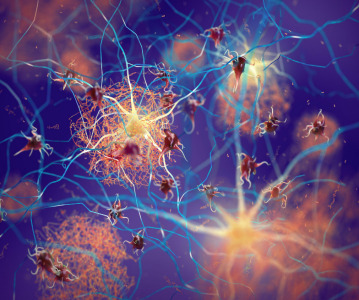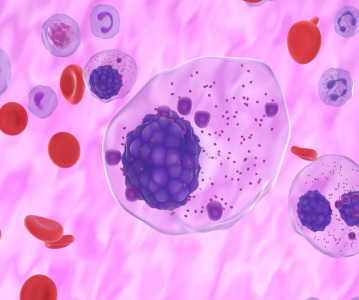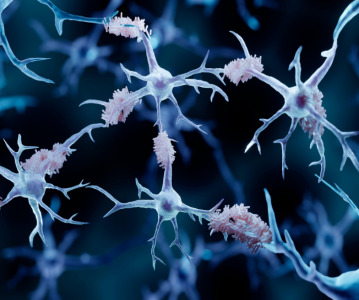NIH Network Revolutionises Stroke Clinical Research

A network of 25 regional stroke centers working with nearby satellite facilities will span the country, have teams of researchers representing every medical specialty needed for stroke care and will address the three prongs of stroke research: prevention, treatment and recovery. The Centers were announced 12 December 2013 by the National Institutes of Health.
“The new system is intended to streamline stroke research, by centralising approval and review, lessening time and costs of clinical trials, and assembling a comprehensive data sharing system,” said Petra Kaufmann, MD, the associate director for clinical research at the National Institute of Neurological Disorders and Stroke (NINDS).
NINDS, which will fund and manage the NIH Stroke Trials Network, or NIH StrokeNet, has a strong history of successful stroke clinical trials during the past 40 years, leading to some astonishing advances in treatment and prevention of the disease, including the first treatment for acute stroke, announced in 1995.
The 25 centers are strategically placed in every region of the country (a complete list of centers their principal investigators, and media contacts is attached). Successful applicants demonstrated experience in stroke research and recruitment, including the ability to enroll underrepresented populations, and were required to offer access to the full cadre of specialties that are involved in stroke care. These include: emergency medicine, neurosurgery, interventional neuroradiology, vascular neurology, neurointensive care, neuroimaging, stroke rehabilitation and pediatric neurology.
Each center will receive 5-year funding, with $200,000 in research costs and $50,000 for training stroke clinical researchers per year during the first 3 years, and additional funds driven by the completion of milestones. The University of Cincinnati will manage the national clinical coordinating center, which will oversee and coordinate the institutional review board and master trial agreements for all of the regional centers. NIH will announce the award of a national data management center in February.
NIH StrokeNet investigators, working with the broader stroke community, will propose, develop and conduct stroke protocols to be administered within the network and train the future generation of clinical researchers in stroke.
Historically, the model for stroke clinical trials was to complete large teams of personnel and infrastructure, which were then disassembled once the trial was completed. This led to delays in patient recruitment and additional costs when new trials were initiated, with some stroke clinical trials lasting many years longer than anticipated and costing millions of dollars more than the original estimate.
In a 2013 article in Stroke, Story Landis, PhD, NINDS director, and co-author Marc Fisher, MD write: “Because our ultimate goal is to test and compare therapies that will have a real impact on patient health, a co-ordinated and long range approach to solving challenges in stroke trial research is sorely needed.”
The network concept evolved from an NINDS planning effort in which stroke experts were asked what is most needed to reduce death and disability due to stroke in the US. They called for a nationwide stroke network that would allow for a more seamless transition between early safety and efficacy trials and Phase II and III clinical trials.
“NIH StrokeNet will allow the most promising therapies to quickly advance to the clinic, to improve prevention, acute treatment, or rehabilitation of the stroke patient,” said Walter J. Koroshetz, MD, NINDS deputy director. “We need to have a balance of approaches to decrease the burden of illness due to stroke.”
“Our goal for the NIH Stroke Centers Network is to initiate four to five NINDS-funded exploratory Phase I and II stroke clinical trials, and two to four Phase III trials during the next 5 years. This is a major challenge which we believe the stroke research community will embrace,” said Scott Janis, PhD, NINDS programme director of the NIH StrokeNet.
Related News
-
News BioNTech to begin mRNA vaccine manufacturing in Rwanda by 2025
German biotechnology company BioNTech has stated their intentions to begin production at their mRNA vaccine factory in Rwanda by 2025, which will mark the first foreign mRNA vaccine manufacturing site on the continent of Africa. -
News Identifying Alzheimer’s Disease biomarker proteins with whole blood tests
A University of Manchester spin-out pharmaceutical company, PharmaKure, has reported successful study results for the quantification of Alzheimer’s Disease biomarker proteins with a whole blood test. -
News Bill & Melinda Gates Foundation to boost mRNA vaccine initiatives in Africa with USD $40m
To address vaccine inequality and accessibility issues, the Bill & Melinda Gates Foundation aims to deliver USD $40m to various biotech companies and vaccine manufacturers in support of mRNA vaccine development. -
News CPHI Podcast Series: Exploring neurological frontiers in Alzheimer's and beyond
The next episode of the CPHI Podcast Series delves into the science and background behind some recent developments in the field of Alzheimer's disease and neurological disorders. -
News Is patient centricity the future of pharmaceutical manufacturing?
In this interview with Sandra Sánchez y Oldenhage, President of PharmAdvice, she speaks to the importance of considering patients in the manufacturing stages of the pharmaceutical supply chain, and how it can redefine healthcare. -
News CPHI Podcast Series: How to leverage AI for Drug Discovery
Artificial intelligence is the topic of debate in the latest episode from the CPHI Podcast Series, where Digital Editor Lucy Chard speaks with Bill Whitford of DPS Group about the integration of AI in healthcare. -
News Pfizer forges ahead with blood cancer therapy after approval from FDA
Pfizer gains accelerated approval from the US FDA for their new bispecific antibody therapy for multiple myeloma, set to address an unmet need for patients. -
News Alzheimer's drug donanemab deemed effective in landmark clinical trial
Results from the TRAILBLAZER-ALZ 2 Randomised Clinical Trial into the use of donanemab to treat early symptoms of Alzheimer’s disease have been analysed.
Position your company at the heart of the global Pharma industry with a CPHI Online membership
-
Your products and solutions visible to thousands of visitors within the largest Pharma marketplace
-
Generate high-quality, engaged leads for your business, all year round
-
Promote your business as the industry’s thought-leader by hosting your reports, brochures and videos within your profile
-
Your company’s profile boosted at all participating CPHI events
-
An easy-to-use platform with a detailed dashboard showing your leads and performance







